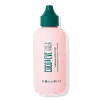What's inside
What's inside
 Key Ingredients
Key Ingredients

No key ingredients
 Benefits
Benefits

 Concerns
Concerns

 Ingredients Side-by-side
Ingredients Side-by-side

Cyclopentasiloxane
EmollientDimethiconol
EmollientC15-19 Alkane
SolventCocos Nucifera Oil
MaskingParfum
MaskingOpuntia Ficus-Indica Extract
Skin ConditioningCarica Papaya Seed Oil
HumectantFicus Carica Fruit Extract
HumectantCarthamus Tinctorius Seed Oil
MaskingCitrus Medica Limonum Peel Extract
EmollientGarcinia Mangostana Fruit Extract
Skin ConditioningC10-18 Triglycerides
EmollientSodium Hyaluronate
HumectantTriolein
Skin ConditioningTocopheryl Acetate
AntioxidantGlyceryl Dioleate
EmollientBenzyl Salicylate
PerfumingLinalool
PerfumingCoumarin
PerfumingLimonene
PerfumingHexyl Cinnamal
PerfumingCyclopentasiloxane, Dimethiconol, C15-19 Alkane, Cocos Nucifera Oil, Parfum, Opuntia Ficus-Indica Extract, Carica Papaya Seed Oil, Ficus Carica Fruit Extract, Carthamus Tinctorius Seed Oil, Citrus Medica Limonum Peel Extract, Garcinia Mangostana Fruit Extract, C10-18 Triglycerides, Sodium Hyaluronate, Triolein, Tocopheryl Acetate, Glyceryl Dioleate, Benzyl Salicylate, Linalool, Coumarin, Limonene, Hexyl Cinnamal
Cyclopentasiloxane
EmollientAlcohol Denat.
AntimicrobialPhenyl Trimethicone
Skin ConditioningDimethiconol
EmollientC12-15 Alkyl Benzoate
AntimicrobialChamomilla Recutita Extract
Skin ConditioningCocos Nucifera Oil
MaskingEthylhexyl Methoxycinnamate
UV AbsorberHelianthus Annuus Seed Oil
EmollientNelumbium Speciosum Flower Extract
Skin ConditioningBenzyl Alcohol
PerfumingCinnamal
PerfumingLinalool
PerfumingLinum Usitatissimum Flower Extract
Skin ConditioningCaprylic/Capric Triglyceride
MaskingGardenia Taitensis Flower Extract
Skin ConditioningRosa Canina Flower Extract
AstringentBisabolol
MaskingGlycine Soja Oil
EmollientParfum
MaskingCyclopentasiloxane, Alcohol Denat., Phenyl Trimethicone, Dimethiconol, C12-15 Alkyl Benzoate, Chamomilla Recutita Extract, Cocos Nucifera Oil, Ethylhexyl Methoxycinnamate, Helianthus Annuus Seed Oil, Nelumbium Speciosum Flower Extract, Benzyl Alcohol, Cinnamal, Linalool, Linum Usitatissimum Flower Extract, Caprylic/Capric Triglyceride, Gardenia Taitensis Flower Extract, Rosa Canina Flower Extract, Bisabolol, Glycine Soja Oil, Parfum
 Reviews
Reviews

Alternatives
Ingredients Explained
These ingredients are found in both products.
Ingredients higher up in an ingredient list are typically present in a larger amount.
Cocos Nucifera Oil is obtained from the kernels of the coconut fruit. In other words, this is coconut oil.
Coconut Oil is rich in fatty acids with lauric acid making up the majority of these. It also contains linoleic acid. Due to this high fatty acid content, coconut oil helps trap moisture and soften skin.
Despite being antibacterial, coconut oil may not be great for acne-prone skin. It is comedogenic and may clog pores. This ingredient may not be safe for malassezia or fungal acne.
Note: Coconut Oil should not replace your sunscreen for UV protection. Studies show it only blocks about 20% of UV.
This oil is non-volatile and has a light scent.
The term 'fragrance' is not regulated in many countries. In many cases, it is up to the brand to define this term. For instance, many brands choose to label themselves as "fragrance-free" because they are not using synthetic fragrances. However, their products may still contain ingredients such as essential oils that are considered a fragrance.
Learn more about Cocos Nucifera OilCyclopentasiloxane, or D5, is a silicone used to improve texture of products and trap moisture.
D5 is considered lightweight and volatile. Volatile means it evaporates quickly after application. Once evaporated, D5 leaves a thin barrier that helps keep skin hydrated.
It is also an emollient. Emollients help soften the skin and prevent water loss. Silicones create a silky texture in products. D5 helps other ingredients become more spreadable.
Studies show D5 is safe to use in skincare products. We recommend speaking with a skincare professional if you have concerns.
Learn more about CyclopentasiloxaneDimethiconol is a silicone that resembles the popular dimethicone. Like other silicones, it is an emollient. Emollients create a thin film on skin to prevent moisture from escaping.
This ingredient helps to create a silky texture and improve spreadability. Due to its high molecular weight and thickness, it is often combined with cyclopentasiloxane.
Linalool is a fragrance and helps add scent to products. It's derived from common plants such as cinnamon, mint, citrus, and lavender.
Like Limonene, this ingredient oxidizes when exposed to air. Oxidized linalool can cause allergies and skin sensitivity.
This ingredient has a scent that is floral, spicy tropical, and citrus-like.
Learn more about LinaloolParfum is a catch-all term for an ingredient or more that is used to give a scent to products.
Also called "fragrance", this ingredient can be a blend of hundreds of chemicals or plant oils. This means every product with "fragrance" or "parfum" in the ingredients list is a different mixture.
For instance, Habanolide is a proprietary trade name for a specific aroma chemical. When used as a fragrance ingredient in cosmetics, most aroma chemicals fall under the broad labeling category of “FRAGRANCE” or “PARFUM” according to EU and US regulations.
The term 'parfum' or 'fragrance' is not regulated in many countries. In many cases, it is up to the brand to define this term.
For instance, many brands choose to label themselves as "fragrance-free" because they are not using synthetic fragrances. However, their products may still contain ingredients such as essential oils that are considered a fragrance by INCI standards.
One example is Calendula flower extract. Calendula is an essential oil that still imparts a scent or 'fragrance'.
Depending on the blend, the ingredients in the mixture can cause allergies and sensitivities on the skin. Some ingredients that are known EU allergens include linalool and citronellol.
Parfum can also be used to mask or cover an unpleasant scent.
The bottom line is: not all fragrances/parfum/ingredients are created equally. If you are worried about fragrances, we recommend taking a closer look at an ingredient. And of course, we always recommend speaking with a professional.
Learn more about Parfum